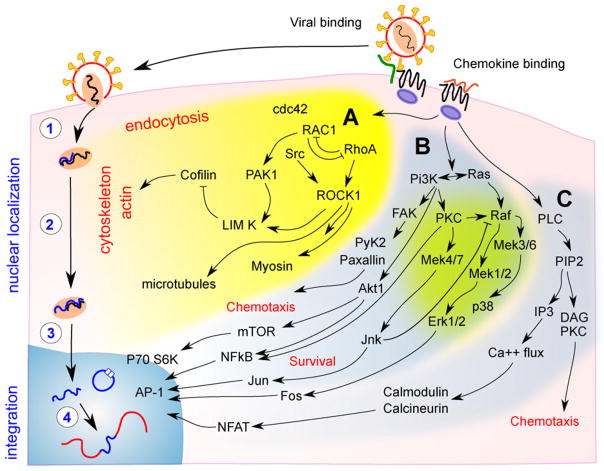Fig. 2.
Signalling pathways activated by chemokine receptors. The binding of both gp120 to CXCR4 and exogenous chemokines to their respective chemokine receptors is associated with signalling by (A) cdc42/RAC1/RhoA (yellow); (B) phosphoinositide-3 kinase (PI3K; blue/green); and (C) phospholipase (PLC; blue). These pathways can mediate HIV replication via modification of post entry events such as (1) reverse transcription; (2) migration of the reverse transcriptase and pre-integration complex to the perinuclear region; and (3) nuclear entry. After nuclear entry, (4) the full length linear DNA may be integrated or form 2-long terminal repeat circles, a virologically dead end product. The RhoA pathway has been shown to modify cofilin activation and actin depolymerisation, which enhances nuclear localisation in chemokine treated cells. The PI3K and PLC pathways, via nuclear factors such as nuclear factor-kappa B (NF-κB) and nuclear factor of activated T cells (NFAT), mediate cellular functions, such as cell survival and chemotaxis, and can also activate viral transcription. These pathways may potentially have a role in enhancing the efficiency of HIV integration in resting CD4+ T cells.

